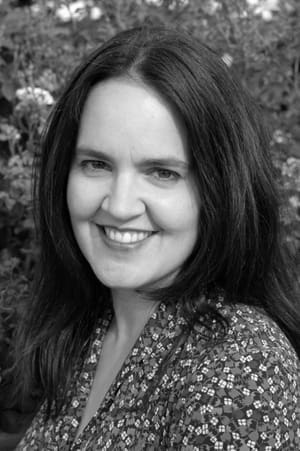A meditation on Cheryl Mendelson’s Morningside Heights (Random House, 2003)
My husband and I moved to New York City several years ago. We had always wanted to live here, but several major detours took us to other places, first. The last of these was a small town in Texas where I, an opera singer, felt cut off not only from my work but, also, from a community that could understand a purpose for my work.
Since coming to New York, we have reunited with old friends (from whom we rented a basement apartment for two years); we bought a house, of which we rent half of for income, we found a church community; and we had our first child, all while juggling two careers working from home. Living in New York has been better and harder than I ever imagined. The “highs” are higher and the “lows,” lower. Now, more than ever, I want to live here, but I am learning that my survival depends on my view of providence.
When I read Cheryl Mendelson’s Morningside Heights, I was stimulated by the way her story gave life not only to the city, but to my experience of it, as well. As an evocative picture of one New York City neighbourhood, Mendelson traces some architectural and social history of Morningside Heights. But her story is told mainly through the lives of the central characters, Anne and Charles Braithwaite, a musician couple with three young children and an unexpected fourth baby on the way. He is an opera singer and she is a pianist, although she plays very little now and only teaches occasionally. They have lived all their lives in Morningside Heights. They cannot imagine living anywhere else, but between rising costs in the neighbourhood and their growing family, they are faced with the prospect of having to move to the suburbs to survive financially.
Visible templates of life
Besides leaving behind the community in which they have lived and raised their family thus far, the Braithwaites are also horrified by the idea of exchanging their city life for that of the suburbs. As Charles contemplates it,
Buses and subways were how civilized people went about their business, and trains and planes were always preferable to cars. But most of all, what templates of life would be visible to his children in some leafy town on the Hudson Line? Beneficent institutions and the kind of human beings who peopled them would be odd, absent ideals, not powerful living realities as they were here in Morningside Heights. What would life feel like in a world that did not set the pursuit of music or art or science or knowledge or justice and goodness at its core? What would the children become in a world in which their parents were eccentrics, startling individuals, rather than members of a modestly coherent society in which their tastes and temperaments were readable to others, even if uncongenial?
For the Braithwaites, life in the city encompasses the kind of experience and community they want to give their children—not to isolate them from or train them to be suspicious of city life. Instead of a safe retreat for family life, Anne and Charles see the suburbs as lonely and disconnected, stifling and, even, dangerous to their children as individuals. The late Jane Jacobs would likely have understood the desire to raise a family in a distinct neighbourhood with its unique patterns, locations, and relationships, rather than in a suburb where the structure of a neighbourhood has broken down and been homogenized in an attempt to create a “community” of individual dwellings with no connection between them—peopled by individuals who prefer this characterless space to a real neighbourhood.
When I am questioned about our intention to stay and to raise our family in the city, my first thought is that people do not realize that only in a big city do you find the kind of compact neighbourhood that produces both real community and great culture. My neighbourhood is different in makeup from Morningside Heights, but it has a distinct flavor and shape that has nothing in common with homogeneity. It is not a glamorous or pretty place, but you don’t have to look hard to find good work being done, whether cooking great food or writing a symphony or performing a theatre piece. It is full of life and families of many different shapes and cultures.
Living in New York is not without struggle however. That which brings diversity can also be a source of conflict, and we experience the effects of racial and economic tensions we would not see in other places. The stereotype of the lonely city full of individuals obsessed with money or power is also not always incorrect. In Morningside Heights, several of the Braithwaite’s friends lead such self-absorbed lives. Morris and Merrit are distinguished professionals in the scientific and literary communities, respectively, who have forged decent careers for themselves. But they are experiencing mid-life crises fueled by failed romantic relationships and a lack of satisfaction with their professional and personal futures. Although lonely and disconnected, they are drawn into the physical and relational community of the Braithwaites’ neighbourhood and family life, and they find new balance and breadth in lives that had been too narrow or self-focused.
For all the help they give their friends, the Braithwaites are struggling for their own balance in a realistic portrayal of the demands of pursuing an opera career while raising a family. The descriptions of their apartment with its precariously stacked piles of music scores, the juggling of performing, auditioning and teaching priorities and schedules, and the nagging questions of ambition and unrecognized dreams all ring true.
The irony of Charles’s having reached the coveted position of a house contract with the Metropolitan Opera, yet feeling he has been passed over for true advancement in his career, is surprisingly real. Unlike the European house system in which singers sing for several years with one opera house, most American opera houses only hire singers for a single production, meaning that a successful opera singer is not only traveling frequently, but also constantly having to contract new work. “The Met” is one of few opera companies in the country that hires singers with year-round contracts, but these singers are usually only given smaller or comprimario roles in productions. The lead roles are still hired out for each production to more famous names.
By reaching this point in his career, and not moving on to more prestigious opportunities, Charles is better able to balance his work and family life. But he and Anne are still left wondering what might have been, and whether fate, ability, or family stresses assigned him this middle place.
Anne once pursued her piano with the same focus as Charles does his singing, but she found that ambition negated by her love for Charles and her children. She still loves music and enjoys teaching it to children, but she does not miss her own pursuit of it. This perspective is harder to understand than Charles’s middle course, because while family life can be consuming and rewarding, it is not usually a good substitute, for a vocational zeal previously focused on a specific discipline.
A modestly coherent community
The process of balancing and perfecting the duties of career and family life, of vocation and sacrifice, is not an easy one for me. Without a belief in the work of providence in my life thus far, and a growing understanding of the nature of living faithfully in the present instead of looking to future achievement for happiness or worrying over a past decision, I would find it difficult to survive the clash of ambition and actual experience.
Knowing this about myself, I’m intrigued by the thread of providence that runs through all of Morningside Heights. Most of the characters are atheists or agnostics, yet they want religious belief to be grounded in history and reality. When Charles takes his son to the nearby cathedral, he remarks to the more traditional Father Merriweather,
We took Stuart and the cat over to be blessed on St. Francis’ (sic) day and they invoked the earth goddess Maia and a lot of spirits. I mean, it wasn’t even monotheism. I wanted Stuey exposed to the influence of the God of the Scriptures, not some cheesy primitive deities. What goes on over there?
The Braithwaites are drawn to Father Merriweather, even though they don’t completely understand him, and they are comforted by his pastoral presence at Anne’s bedside in the hospital during her recovery from serious post-pregnancy complications. There is a suggestion that Father Merriweather’s prayer may have been efficacious in Anne’s recovery, even though Charles is uncomfortable with the thought. But the clearest nod to providence is the story’s inexorable movement toward resolutions to the main crises facing the Braithwaites and their friends.
While this fairy-tale ending seems out of touch with the realism of much of the story, the reader has been privy to the likely outcome from early on. This heavy-handed sense of authorial knowledge suggests that the kind of middle-class life in New York to which the Braithwaites and their friends aspire requires a miracle of providence to sustain it over the long term. A more positive view of the book’s message could be that while we think we know where we need to live and to work, we can doubt this sense of calling until an act of providence establishes us in a way beyond our power.
The struggles the Braithwaites and their friends experience strike chords with me and my friends here in NYC. We struggle to figure out how to approach these same crises of career, faith, and family as Christians who believe that life is not random nor governed by meaningless happenings. To live in this busy, chaotic place. To resist despair over lack of money, direction, job opportunities, or acclaim, and to persist in doing our best work possible. To pursue relationships outside my closest circle of family and friends. To wrestle with my doubts and ideas and overcome fear of growth. To continue exploring the church’s role in the city. To be a Christian in this community.

